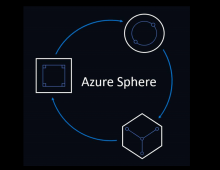
IBM Connects Internet of Things to the Enterprise
IBM plans to invest $3 billion over the next four years to establish a new Internet of Things (IoT) unit, and that it is building a cloud-based open platform designed to help its build IoT solutions. With new industry-specific cloud data services and developer tools, IBM will help its clients integrate data from many IoT and traditional sources. These resources will be made available on an open platform to provide manufacturers with the ability to design and produce a new generation of connected devices that are better optimized for the IoT, and to help businesses create systems that better fuse enterprise and IoT data to inform decision-making.
IBM estimates that 90 percent of all data generated by devices such as smartphones, tablets, connected vehicles and appliances is never analyzed or acted on. As much as 60 percent of this data begins to lose value within milliseconds of being generated.
To address this challenge, IBM is announcing will offer the IBM IoT Cloud Open Platform for Industries. This platform will provide new analytics services that could be used to design and deliver vertical industry IoT solutions. For example, IBM will introduce a cloud-based service that helps insurance companies extract insight from connected vehicles. This will enable more dynamic pricing models and the delivery of services that can be customized to individual drivers.
New IoT services as part of IBM’s Bluemix platform-as-a-service will enable developers to integrate IoT data into cloud-based development and deployment of IoT apps. Developers will be able to enrich existing business applications – such as enterprise asset management, facilities management, and software engineering design tools – by infusing more real-time data and embedded analytics to further automate and optimize mission-critical IoT processes.
IBM also announced a new global strategic alliance announced today with The Weather Company through WSI, its global B2B division. WSI’s forecasting system ingests and processes data from thousands of sources, resulting in approximately 2.2 billion unique forecast points worldwide, and averages more than 10 billion forecasts a day on active weather days. The IoT and cloud computing allow for collection of data from more than 100,000 weather sensors and aircraft, millions of smartphones, buildings and even moving vehicles.





















